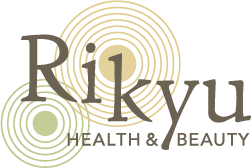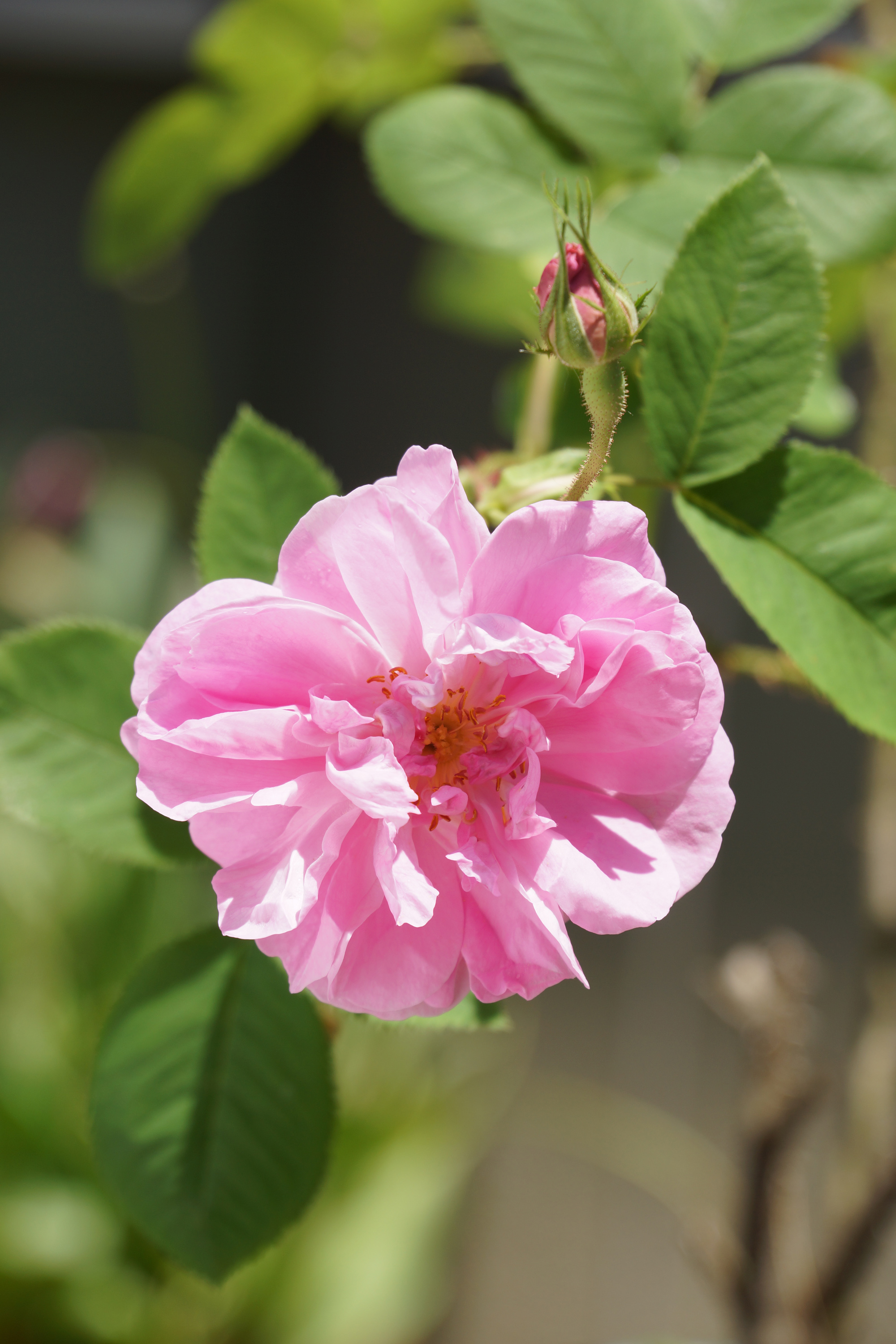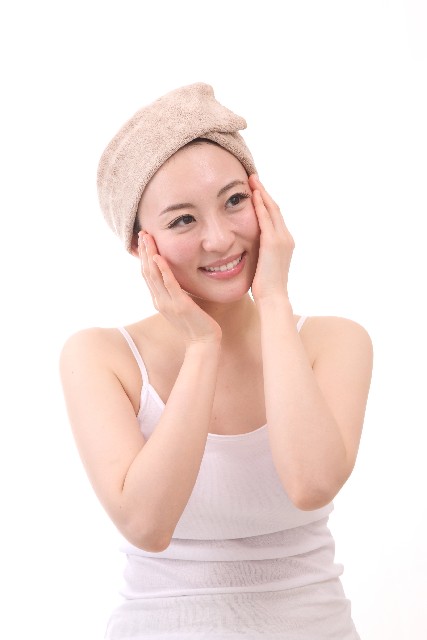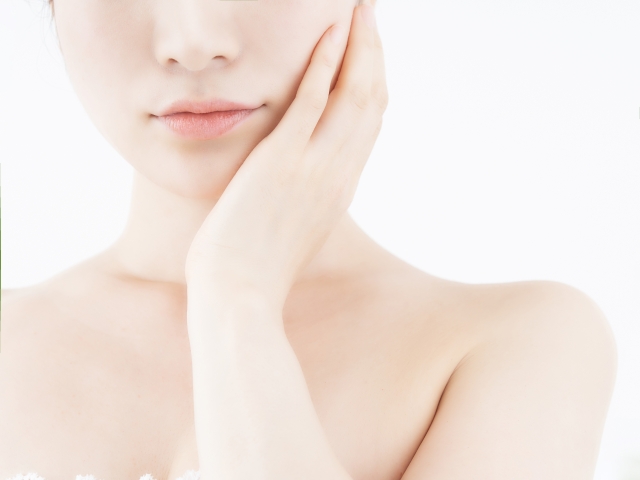Types of acne | Whiteheads, Blackheads, Redheads, Pustules
Acne is a skin disease called acne vulgaris, and the symptoms change over the following four stages.
Process of acne formation
- Pores are clogged due to hyperkeratinisation (micro comedo)
- Increased secretion of sebum in the sebaceous glands (whiteheads and blackheads)
- Bacteria growing in the pores and sebaceous glands, causing inflammation (redheads)
- Inflammation spread in the sebaceous gland and its surroundings (pustules acne)
Find out what your current acne stage is and take an appropriate skin regime.
1.Pores are clogged due to hyperkeratinisation
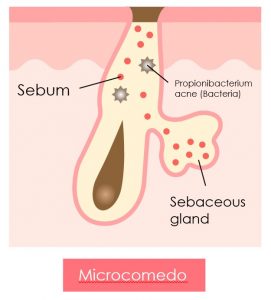
The initial stage of acne is called microcomedo, which means that the pores are starting to clog due to excessive development of keratin in the follicle.
This can happen from both increased proliferation and decreased desquamation of keratinocytes in the follicular sites, resulting in dead keratin and sebum accumulated together, and plugged pores.
At the salon, we’ll recommend you to go for Kome-nuka steam deep cleansing for this stage.
2.Increased secretion of sebum in the sebaceous glands
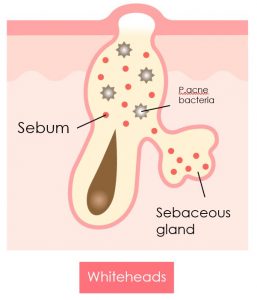
Microcomedo is invisible. However, as the secretion of sebum increases the pores begin to get larger, and become clogged with small white lumps on the surface. These are called whiteheads.
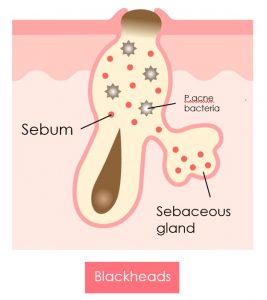
If this progresses further, the clogged sebum in the pores will show on the surface and the whitehead will oxidize into what is called a blackhead.
Microcomedo, whiteheads and blackheads are characterized by the fact that they are not yet inflamed.
At this stage, pay attention to cleansing and exfoliating and keep your skin clean and clear.
At Rikyu, we can treat white/blackheads with Kome-nuka steam deep cleansing.
Also, you can consider Oriental “Tsubo” total facial care as well, if you feel your acne condition is associated with stress.
3.Bacteria grow in the pores and sebaceous glands, causing inflammation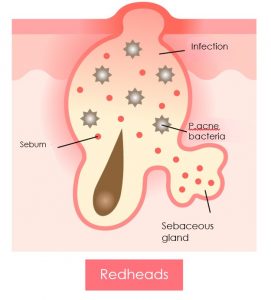
As black acne evolves further, it becomes an inflamed “red acne” condition.
Propionibacterium acne bacteria (P.acne bacteria) are encouraged to grow by sebum secretion.
P. bacteria are skin-friendly bacteria that occur naturally on the skin, keeping the skin acidic and suppressing pathogenic bacteria. However, when P. bacteria increases excessively it becomes harmful, causing inflammation in the sebaceous glands.
Environ Cool Peel is recommended for inflamed acne care.
4.Inflammation spread in the sebaceous gland and its surroundings
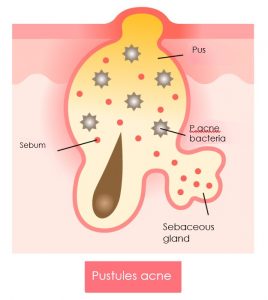 When redheads are aggravated, inflammation spreads and pus develops. This may leave post-acne scars on the skin, so you need to be especially careful to treat this condition.
When redheads are aggravated, inflammation spreads and pus develops. This may leave post-acne scars on the skin, so you need to be especially careful to treat this condition.
In the inflamed condition, either with/without pus, treatment should include keeping pores clean, calming down the inflammation to control bacteria growth.
In addition, it is necessary to repair damaged skin so that open pores and acne scars will be less visible or even vanish completely.
Be patient with acne – do not inadvertently treat it in the wrong way!
Regular Environ Cool Peel sessions are recommended at this stage.
However, since it would take time to treat this condition, please consult us first.
